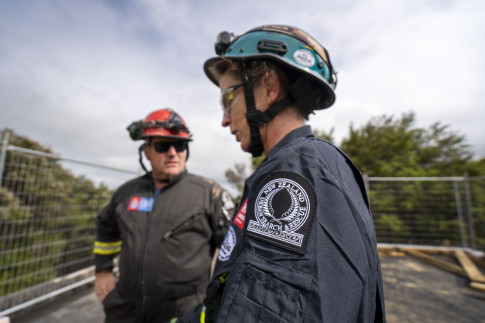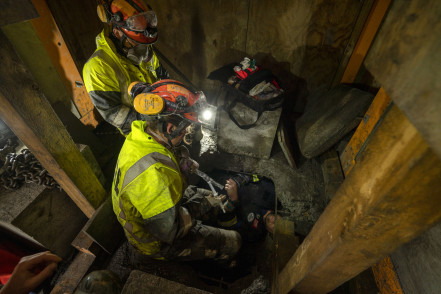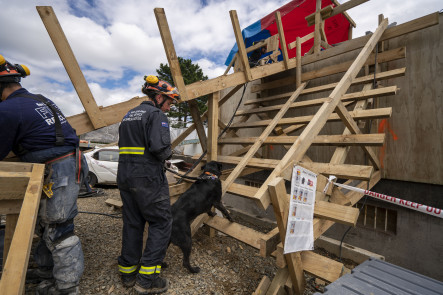43 new Urban Search and Rescue recruits learn emergency skills
3 December 2020

43 new technicians, medics and logisticians have joined Fire and Emergency’s Urban Search and Rescue (USAR) team.
For the past three weeks the recruits have been learning and practising the specialist skills they will need to respond to emergencies as members of a USAR team.
Fire and Emergency National USAR manager Ian Duncan says the recruits have been learning how to access and stabilise collapsed buildings, cut concrete and locate and rescue people trapped in a collapsed building.
"They’ve then put those skills into practice during a 72-hour exercise simulating what it would be like responding to a real emergency event," Ian Duncan says.
Holly Grammer is one of the new USAR technicians and a career firefighter from Spreydon Station in Christchurch.
"It’s been amazing learning these skills from such experienced instructors," says Holly.
"While I hope we don’t have to use them anytime soon - it’s great to be able to build on what I do as a firefighter and be able to help on another level during a big emergency."
Most USAR personnel are career firefighters who are trained in urban search and rescue in addition to their day to day firefighting roles. But the teams also include people from outside Fire and Emergency such as medics, engineers, doctors and dog handlers.
This course was made up of career firefighters, as well as two Fire and Emergency Communication Centre dispatchers, a Volunteer Support Officer and a regional telecoms specialist in logistics roles.
"USAR teams are traditionally used during an earthquake to rescue people from collapsed buildings," says Ian Duncan.
"But having these specialist skills within and available to Fire and Emergency means we can also deploy our USAR teams to help during other incidents - such as assessing property damage from floods, operating drones to identify hot spots in fires and providing international humanitarian assistance."
Rescuing someone trapped at USAR training

Search dogs at USAR training

Cutting concrete at USAR training














